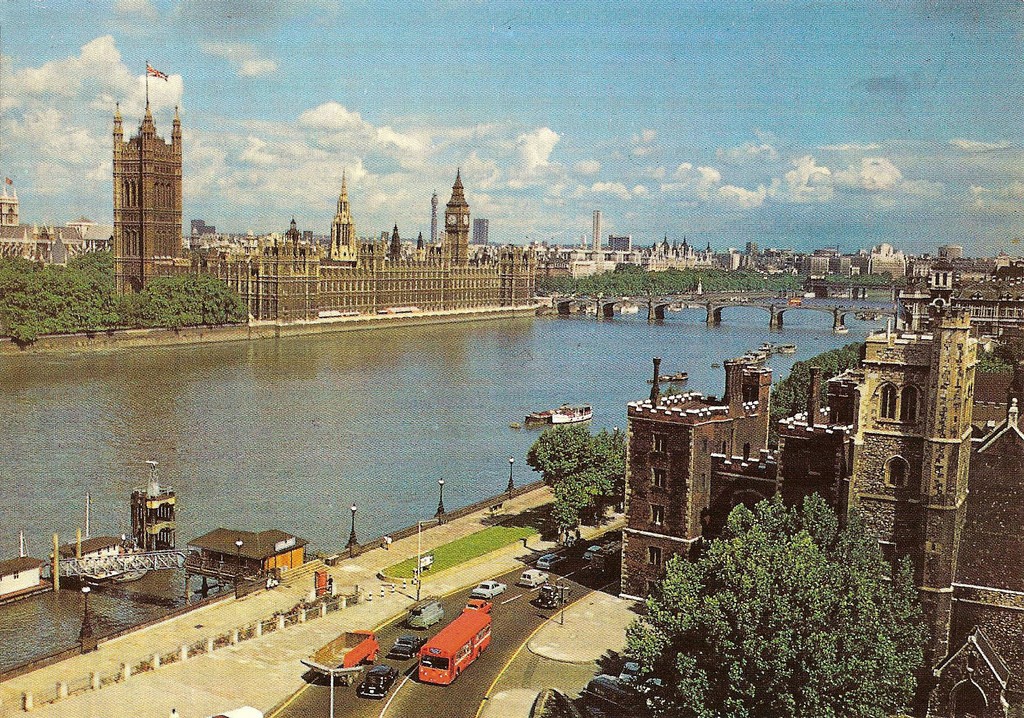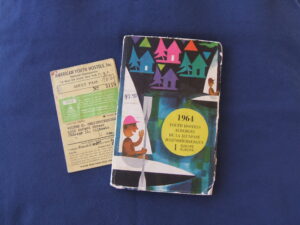World traveller and author Walt Christophersen shares his experiences of backpacking in Europe 50 years ago: this is a candid snapshot of a fascinating journey continued in his book “By Ship, Train, Bus, Plane & Sometimes Hitchhiking” which is available on Amazon.
Birth of the travel bug…
Until the 1950s, only wealthy Americans toured Europe, or anywhere else for that matter. Airfares were expensive. Guidebooks advised aspiring travelers to stay at the London Hilton or the Ritz in Paris and pack proper attire for the cocktail hour.
Then two things happened.
In 1953, Icelandic Air Lines (now Icelandair) revolutionized transatlantic air travel by introducing cut-rate flights from New York to Luxembourg.
And in 1956 an ex-GI named Arthur Frommer published a book called Europe on $5 a Day, demonstrating that a European vacation was within reach of Americans who never thought they could afford it.
Frommer’s title was a bit misleading though. The $5 covered only food and lodging. Everything else, including transportation, was extra.
But prices were incredibly low.

Back in the mid-60s when I first went to Europe, admission to Madam Tussaud’s wax museum in London cost only 70¢, the ruins at Pompei 12¢ and a second class train ticket from London to Paris less than $15.
In Spain, the price of a one month third class rail pass was the equivalent of $16 in pesetas. Coincidentally, that was the same amount the blood bank paid for a donation. Some backpackers would go directly from the blood bank to the train station.
Adventurous Americans discovered that if they stayed in youth hostels and hitchhiked, they really could get by on a grand total of only $5 a day. Whereas Frommer’s bargain hotel rooms were priced as high as $3, bunking in a hostel cost no more than 50¢. And of course hitchhiking was not only free, but an acceptable mode of travel in Europe.
Hostelling in the ‘60s – a snapshot
The size, quality and atmosphere of the youth hostels varied widely. A small hostel in the country might sleep as few as a dozen people whereas big city hostels often had several hundred beds with dozens of double bunks to a room.
German hostels were known for cold showers and regimentation. The Rome hostel was famous for theft.
The ones in Florence and Luxembourg City were very nice. The one in Algiers may be the dirtiest one I ever saw.
My all-time favorite was a three-masted sailing ship docked in Stockholm named the STF Af Chapman Boat and House, which slept 130. The vessel was built in Britain in 1888 and sailed between Wales and Australia more than a century ago. She has served as a hostel since 1949 and was still in operation at this writing.
Other notable hostels included one inside the medieval city of Carcassonne in southern France and another inside the old city wall in Nuremberg, Germany.

When checking in to a hostel, guests had to hand over their hostel cards. And in some areas, they had to do some work before their cards were returned. I had to sweep floors in Amsterdam and peel potatoes in Brussels.
There were disadvantages to hostels such as a curfew – usually 10 p.m. – and the fact that most were closed during the day between 10 a.m. and 4 p.m. – not very convenient when it was raining. Many were located on the outskirts of cities and it often took an hour of asking directions and riding buses and streetcars to find them.
I spent a lot of time and effort trudging to hostels only to learn they were full. Or I didn’t make it before 10 p.m. and was shut out. In such a case, if I were really lucky, the person in charge would recommend a YMCA, a reasonably priced hotel or student quarters not far away.
The popular hostel in Nice on the French Riviera was full when I arrived, so I and others slept on cots in a tent. In Sorrento, Italy, the hostel was so crowded I had to sleep on two blankets on the floor.
Sleeping bags were prohibited but sleeping sheets were required. They were nothing more than a sheet sewn in the form of a sleeping bag. The aim was to keep the mattresses clean since sleeping bags presumably had been exposed to the outdoors. Some hitchhikers carried sleeping sheets. If not, they could be rented at a reasonable rate.
Big city hostels had a three-day limit and were often difficult to get into in summer, but they did take reservations.

In Switzerland and Bavaria, there was an age limit of 25. There was no limit elsewhere, but preference was given to those under 30 when the beds started filling up.
Most hostels served breakfast – bread, butter, jam, cheese, sometimes cold cuts, and bad coffee. Many offered an evening meal at low cost. I never drank wine until I stayed in hostels. I didn’t like the taste. But that was the standard hostel beverage in Spain and Italy, watered down and served by the pitcher. If you were thirsty, you drank it.
During the day when the hostels were closed, university cafeterias were great places to get good, inexpensive lunches.
Since every person who stayed in a hostel had the same goal – to see as much as possible for as little as possible – there was a great camaraderie you couldn’t find in a hotel. I was always running into travelers who had just come from where I was going, people who were eager to fill me in on where to stay or eat, what to see and other helpful hints.
Currently living in Arizona, Walt Christophersen has visited more than 100 countries and resided in Germany, Lebanon and Korea. Although he’s devoted much of his career to TV news in the United States, his articles on world travel have often been featured in major U.S. and Canadian newspapers.



